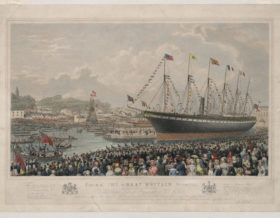Spanish American wars of independence (1808-1833)
At the beginning of the nineteenth century, almost all of South and Central America, and significant territories in the Caribbean and North America, remained under the sovereignty of the Spanish and Portuguese Crowns. When the legitimacy and reach of Spanish domestic power was thrown into disarray by Napoleon’s decision to impose his brother Joseph on the Spanish throne in 1808, Spanish authorities across the empire had to determine how to respond.
As the political crisis in Spain deepened, Spanish American peoples pressed for dramatic changes to their status and sovereignty, and waves of bloody and messy conflicts ensued. Drawing heavily on the revolutionary ideas and models from the United States of America, France, and Haiti, leaders such as Hidalgo and Bolívar pushed for independence and a new sense of cultural and political identity. By 1830, Spain’s last attempt to reconquer its former colonies had failed, and in 1836 the Congress of Spain renounced its sovereignty over the Americas. It initiated treaties to recognise over a dozen new nations including Mexico, Peru, Uruguay, Paraguay, Columbia, Venezuela, Argentina, Bolivia, Chile and Brazil.





